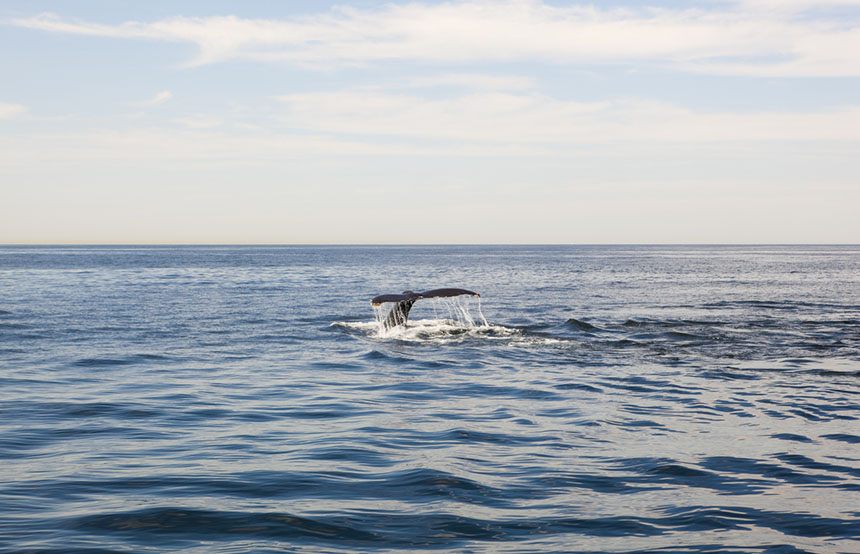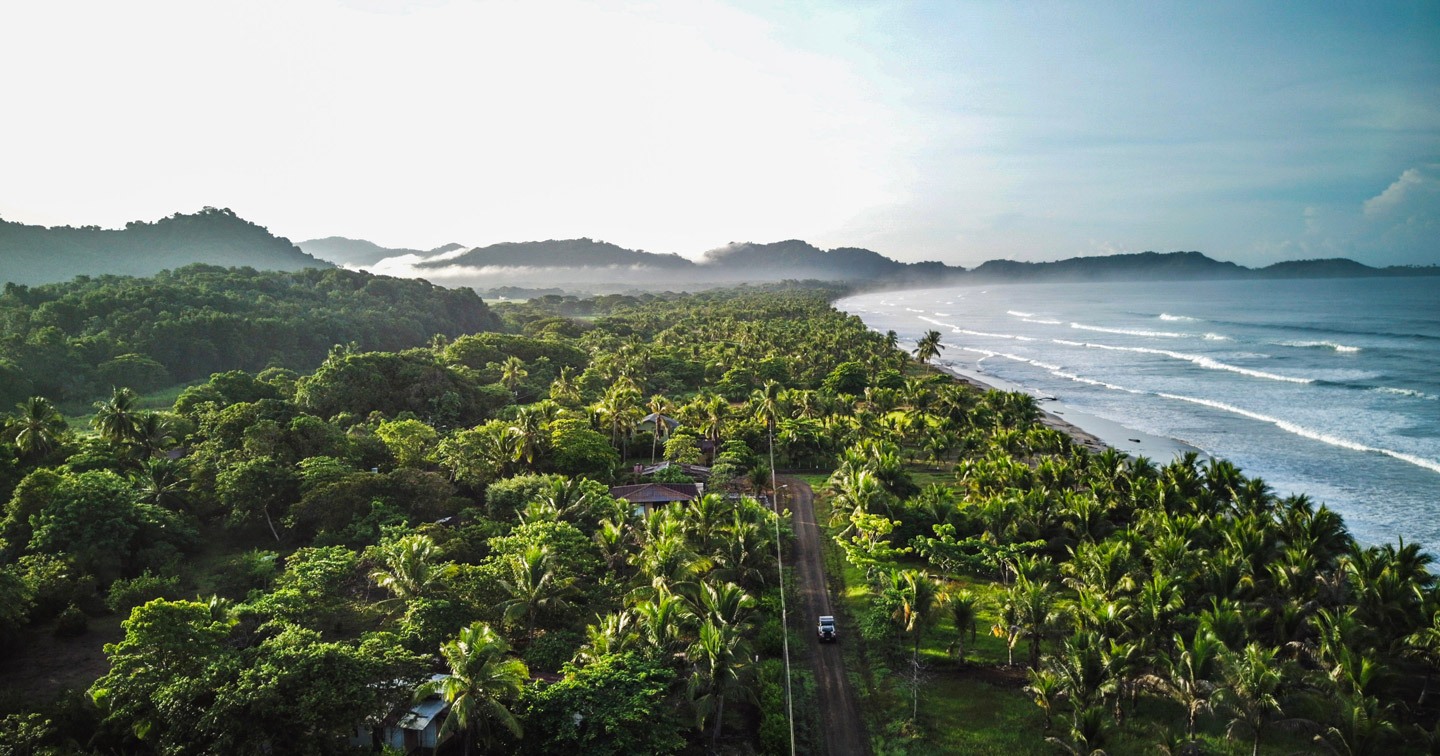Published 30th Jan. 2023
Reading time
It’s no mystery why whales, a family of creatures that contains some of the oldest, largest mammals on the planet Earth, attract wonder and fascination from us tiny human beings. Even more incredible is that despite their differences from humans in size, shape, and habitat, the behaviour of whales is strangely comprehensible to us; between the complex songs they sing, and their often tightly-knit social and family units, it’s easy to romanticise these gentle giants. As the famous 'Moby Dick' can demonstrate, whales have often come to symbolise the incredibly majesty of nature and the sea — but our interactions with them now is guided by a more ecologically-friendly intent than Ahab and his crew of whalers. The boats that seek out whales today are mostly taking curious spotters to capture them through a camera lens. Whale watching in Costa Rica is particularly popular, and especially if you have never seen one in the wild before, it should definitely be on your itinerary for your next coastal holiday.
It would be inaccurate to describe the whales you’re likely to see in Costa Rica as native to these waters. Nonetheless, Costa Rica is one of the most reliable places to see the endangered humpback whales, due to their particular migration habits. Californian humpback whales, North Atlantic St Lawrence humpback whales, and Antarctic humpback whales are all frequent sights for visitors going whale watching in Costa Rica. At around 50ft in length, the whales do not disappoint if you are looking for an impressive sight, and they are known for breaching the water in ways that make them particularly visible to folks on the surface. The coasts are also home to a wealth of other marine life, including the perennial spotted and bottle nosed dolphins, whose friendly acrobatics are an almost sure sight on any aquatic excursion. Other whale species that can be sighted around Costa Rica are sei whales, blue whales, and pilot whales, with orcas occasionally (but really quite rarely) showing their faces. The rarity of the so-called ‘killer whales’ is part of what makes this part of the ocean popular for species such as humpbacks to come and breed, at least according to some theories.

The popular seasons for whale watching in Costa Rica aligns with the migration habits of the humpback whales, as these are the most reliable species for sightings. Whales prefer to live in colder waters than the sea around Costa Rica, but for breeding and raising their young, temperate climes with fewer predators are preferable. The quirk of this particular location is that it is the preferred spot for whales all over the world; in the Northern Hemisphere, this means migrating to Costa Rican waters from December to April, but for whales from the Southern Hemisphere, they instead visit from July to November. Effectively, this means that whales are ‘wintering’ in the tropical climate all year-round. Whales come from as far as Antarctica for the ideal climate of these waters, which makes for the longest migration of any animal in the world. Talk about world travellers. If you’re picking a time to visit (despite whale season theoretically being all year long), the choice of some Northern Hemisphere humpbacks to migrate to Hawaii means that August to October make for the highest certainty of a rewarding whale watching trip. A particularly ideal time is September, as there is a two-week-long whale watching festival that month. It takes place in Uvita, one of the most popular spots for whale watching, and tours get much cheaper during this time. However, this popular event means that hotels get booked up far in advance, so if you fancy adding this to your itinerary, we recommend planning ahead.
Whales can be spotted all along the Pacific and northern Caribbean coasts of Costa Rica — but nonetheless, there are some places that are particular hotspots. Uvita is a town on the Costa Ballena (the Whale Coast) so it is unsurprising that it is unanimously considered the place to go whale watching in Costa Rica. The tours are available in both seasons, and often come with entry to the Marino Ballena National Park, home to a giant sandbar that resembles a whale’s tail. The park safeguards the land, ocean and marine life — particularly the whales that visit these waters — as well as coral reefs and breeding grounds for whales. Paying to experience some of these natural wonders contributes to these conservation efforts, which is a huge bonus to lovers of aquatic life. A good whale-watching tour will not involve swimming with whales or dolphins, as this is illegal for the protection of the wildlife, but features such as snorkelling stops, hikes, and lunch on a nearby park or island can be included to really make a day trip out of the experience.
As with any trip onto the ocean, we recommend bringing a waterproof bag for your things, as well as a waterproof sleeve to protect your phone. The weather is also likely to be wet, as the most reliable season for whale watching in Costa Rica is also the rainy season, so pack a mac and don’t forget about sunscreen, either, as you’ll be sitting outside for hours.
Header Image: Un Cercle

Whether you want to hit the hotspots or venture off the beaten track, our consultants will create a bespoke Costa Rica trip for you. Having scoured the country for the best properties, we offer everything from rustic lodges to luxurious hideaways. We can take you away from the crowds using our knowledge of hidden beauty spots; so instead of queuing for a waterfall in Arenal, you can enjoy a river all to yourself in Bijagua. With something for both families and couples, Costa Rica is best discovered on a self-drive trip – don't worry, you can leave the route planning to us.
ENQUIRE NOWPractical advice and inspiration for your next trip

Sandwiched between Panama and Nicaragua, among deliciously verdant greenery, lies the happiest country on earth: Costa Rica. Overflowing with exotic wildlife, misty volcanic peaks and surfers’ havens, it’s no wonder this pocket-sized country has become increasingly popular with travellers. A craggy chain of towering volcanoes act as a spine, running through the country’s middle and separating the two palm-fringed coastlines that feature on many a bucket list.
1st February 2025 - Costa Rica Travel Inspiration

Pint-sized Costa Rica might be small, but it sure is mighty. Fusing thrumming cities like San Jose and Limon with outstanding nature, this pocket of paradise boasts two rugged coastlines, a strip of smouldering volcanoes and plenty of lush rainforests, jade green lakes and misty mountain peaks. It’s no wonder we struggled to pick just six of the most beautiful places in Costa Rica for this roundup. From waterfall chasing at Tenorio Volcano National Park and rafting down the Pacuare River,
21st December 2024 - Costa Rica The Natural World

The ‘know-it-all’ of the eco class, Costa Rica is consistently listed as one of the ‘greenest’ and ‘happiest’ places on the planet. And this eco-minded attitude is summed up by their ubiquitous slogan ‘Pura Vida’, which translates to ‘pure life’ or ‘simple life’. In order to protect its resplendent landscapes and dizzying biodiversity, the country has long championed sustainable travel, through Community Based Tourism initiatives, renewable energy and environmental education.
25th October 2023 - Costa Rica Responsible Travel

Our team of destination experts will get to know you and your unique requirements for your holiday

We work with you to build an ultra-personalised holiday itinerary with your choice of accommodation, experiences and activities

All of our holidays include little extras designed to make a big difference to your trip, from fast-tracking you through airport check-in and security to our network of local Concierges